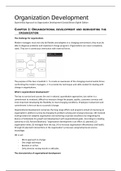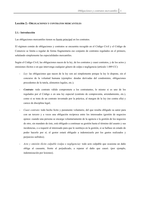Classification of Amphibians and Reptiles
Class of Amphibia has three orders:
o Anura (frogs and toads)
o Apoda (caecilians)
o Urodela (Salamanders and Newts)
Class of Reptilia has four orders:
o Crocodylia (Alligators and Crocodiles)
o Sphenodontia (tuataras)
o Squamata (lizards and snakes)
o Testudines (turtles and tortoises)
Reptiles and Amphibians in Ontario
10 species of turtle
18 species of snake
1 lizard species
13 species of salamander
13 species of frog & toad
75% of Ontario’s reptiles are considered to be “at risk” according to the Ontario Endangered Species
Act
Amphibians populations are also declining.
Threats to Reptiles & Amphibians in Ontario
Habitat loss
Road mortality
Persecution
Illegal trade
Pollution
Snapping Turtle
Appearance
Long tail has a series of triangular spikes along the top that are reminiscent of those of a
stegosaurus. The carapace (upper shell) is tan or olive to black in colour, has a coarsely serrated
anterior (front) edge and three longitudinal ridges, and is often covered with algae. The plastron
(lower shell) is very small. The maximum length of the carapace in this species is 47 centimetres.
Habitat
The snapping turtle occurs in almost any freshwater habitat, though it is most often found in
slow-moving water with a soft mud or sand bottom and abundant vegetation. This species may
inhabit surprisingly small wetlands, ponds and ditches. It hibernates in the mud or silt on the
bottom of lakes and rivers, usually not too far from the shore.
Reproduction
In Ontario, females do not begin to breed until they are 17 to 19 years old. They dig a nest in
late May or June in an open area, usually one with loose, sandy soil. The nest site is often the
side of a road, an embankment or a shoreline, but the females will use almost any area they can
excavate. A single clutch usually consists of between 40 and 50 eggs, which hatch in the fall.
Hatchlings are two to three centimetres in length. The incubation temperature of the eggs
determines the gender of the hatchlings.
, Reptiles, Amphibians & Birds
Five Lined Skink (Plestiodon Fasciatus)
Appearance
The five-lined skink is a smooth, slender lizard that can grow to 21 centimetres in length, but
most individuals are much smaller. Their colouration varies with age. Juveniles and young adult
females are glossy black with five cream stripes down the back and a bright blue or blue-grey
tail. Males and older females gradually fade to a more uniform bronze, although often the
stripes are still visible. Males in breeding condition have a bright orange chin and jaw.
Habitat
Five-lined skinks in the Great Lakes–St. Lawrence population are typically found in forest
openings, specifically large rock outcrops. Along the Lake Erie shoreline, where the Carolinian
population lives, skinks inhabit open forests, small meadows, beaches and stabilized sand dunes.
Five-lined skinks hibernate in groups under rocks or tree stumps and in rotting wood.
Reproduction
Five-lined skinks reach sexual maturity at just under two years of age. They breed in May and
early June. Females lay two to 15 eggs in the early summer in a nest excavated under cover or
within a rotting log. Several females may nest together and will protect their nest from
predators. Females bask in the sun and return to the nest to use their bodies to warm their eggs,
which hatch in late summer. The hatchlings are approximately three centimetres long.
Bullfrog (Lithobates Catesbeianus)
Appearance
The bullfrog varies in colour from pale green to dark greenish brown above, is creamy white
below and has variable dark mottling on the back or underside. Adult males have pale to bright
yellow chins during the breeding season. This species is distinguished by its very large tympani
(eardrums), which are always larger than the eyes, especially in males. Bullfrogs have lateral
folds but, unlike in other frog species, these folds wrap downward around the tympani rather
than trailing down the back. Adult bullfrogs may grow up to 17 centimetres long. The call of this
frog is deep and resonant – a vigorous, growling “jug-o-rum.”
Habitat
Bullfrogs, which require large permanent waterbodies to breed but may spend part of the
summer in smaller ponds, are usually found in water along a well-vegetated shoreline. Over the
winter, bullfrogs hibernate in deep ponds, lakes and rivers.
Reproduction
Bullfrogs breed later than most other frogs, usually from mid-June to late July on warm, humid
or rainy nights. The egg masses may contain up to 20,000 eggs and, when first laid, spread out
over the surface of the water. Bullfrog tadpoles, which grow for up to three years before
changing into frogs, eat suspended matter, organic debris, algae, plant tissue and small aquatic
invertebrates.
Bird Identification
Silhouettes
Even without colour, the silhouette of a bird gives many clues to its identity
Silhouettes can help you decide the family to which a bird belong
Bird Families
Birds are placed into families as part of their taxonomy/classification:
Ducks, Geese, and Swans(ANSERIFORMES)
Grouse, Quail, and Allies(GALLIFORMES)










